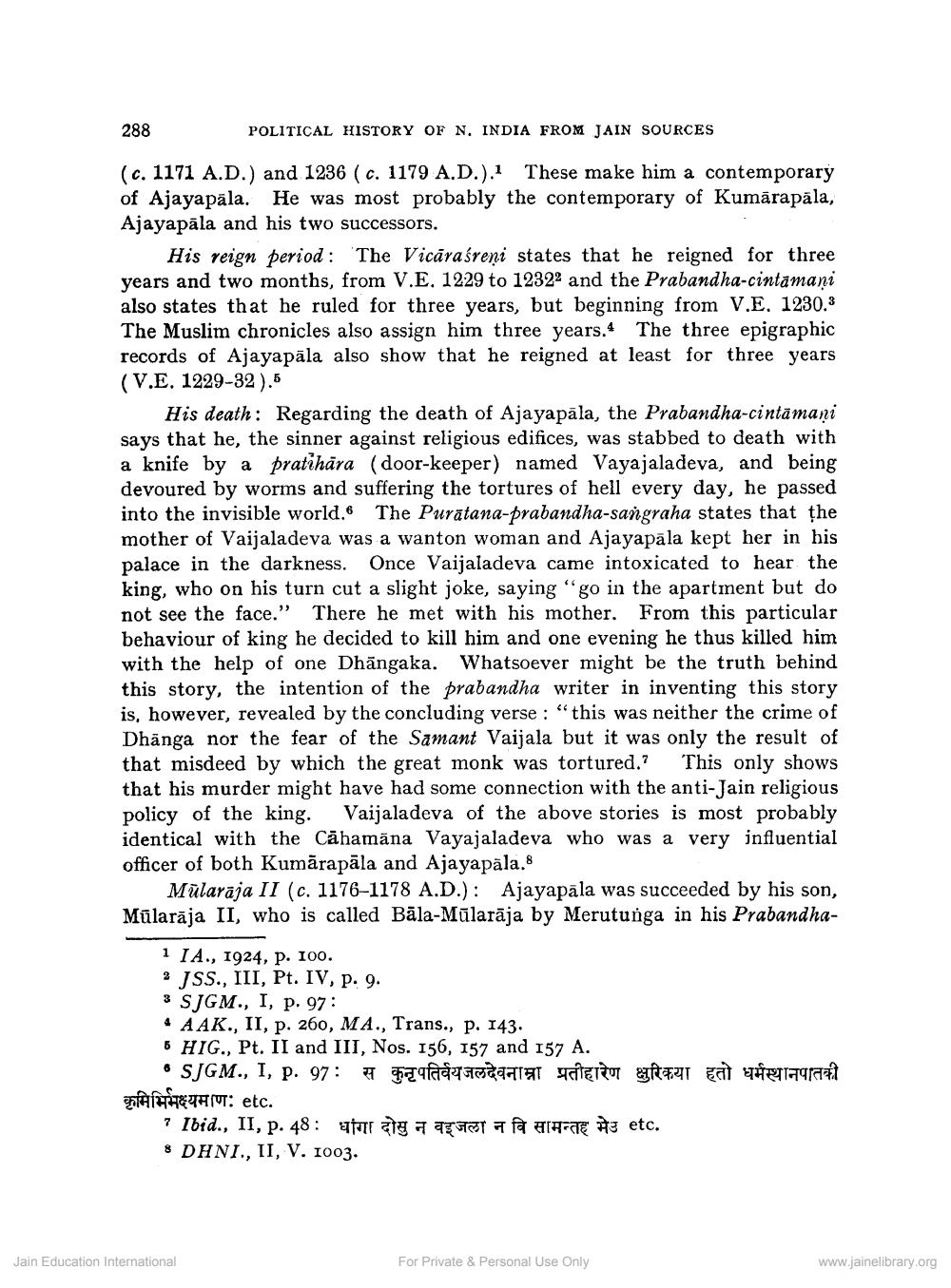________________
288
POLITICAL HISTORY OF N. INDIA FROM JAIN SOURCES
(c. 1171 A.D.) and 1236 (c. 1179 A.D.). These make him a contemporary of Ajayapāla. He was most probably the contemporary of Kumārapāla, Ajayapāla and his two successors.
His reign period: 'The Vicaraśreni states that he reigned for three years and two months, from V.E, 1229 to 12322 and the Prabandha-cintamani also states that he ruled for three years, but beginning from V.E. 1230.3 The Muslim chronicles also assign him three years. The three epigraphic records of Ajayapāla also show that he reigned at least for three years (V.E. 1229-32).5
His death: Regarding the death of Ajayapāla, the Prabandha-cintamani says that he, the sinner against religious edifices, was stabbed to death with a knife by a pratihāra (door-keeper) named Vayajaladeva, and being devoured by worms and suffering the tortures of hell every day, he passed into the invisible world. The Purātana-prabandha-sangraha states that the mother of Vaijaladeva was a wanton woman and Ajayapāla kept her in his palace in the darkness. Once Vaijaladeva came intoxicated to hear the king, who on his turn cut a slight joke, saying "go in the apartment but do not see the face." There he met with his mother. From this particular behaviour of king he decided to kill him and one evening he thus killed him with the help of one Dhāngaka. Whatsoever might be the truth behind this story, the intention of the prabandha writer in inventing this story is, however, revealed by the concluding verse: “this was neither the crime of Dhānga nor the fear of the Samant Vaijala but it was only the result of that misdeed by which the great monk was tortured. This only shows that his murder might have had some connection with the anti-Jain religious policy of the king. Vaijaladeva of the above stories is most probably identical with the Cāhamāna Vayajaladeva who was a very influential officer of both Kumārapāla and Ajayapāla.
Mularaja II (c. 1176-1178 A.D.): Ajayapala was succeeded by his son, Mūlarāja II, who is called Bāla-Mūlarāja by Merutunga in his Prabandha
1 I A., 1924, p. 100. > JSS., III, Pt. IV, p. 9. 3 SJGM., I, p. 97:
AAK., II, p. 260, MA., Trans., p. 143. 6 HIG., Pt. II and III, Nos. 156, 157 and 157 A.
SJGM., I, p. 97: Tafada la YETTO SHATI HIHET (UT: etc.
? Ibid., II, p. 48: aturale a FTP OHTE #3 etc. 8 DHNI., II, V. 1003.
1 EN
HET
Jain Education International
For Private & Personal Use Only
www.jainelibrary.org




